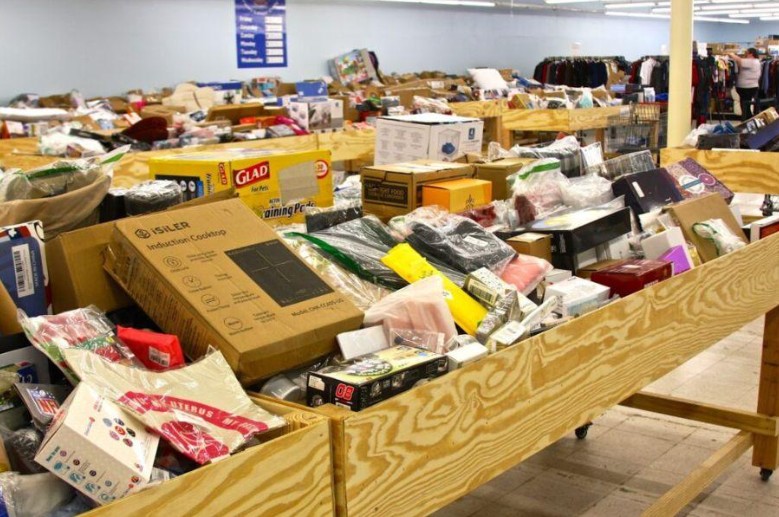As e-commerce and liquidation retail grow quickly, more people are starting side hustles or even full-time businesses by reselling products from Amazon return bin stores. These stores, stocked with overstock and returned items from big retailers, give everyday people a chance to earn real income without needing a lot of money to start.
If you’ve ever wondered how some resellers consistently turn $5 purchases into $100 sales, this guide will walk you through the strategies, mindset, and tools they use to succeed.
What Are Amazon Return Bin Stores?
Amazon return bin stores are retail shops that buy large loads of returned, overstocked, or clearance items from Amazon and other major retailers. Rather than selling each item separately, these stores put everything in big bins and set a single price per item for each day. Prices often start higher on restock day and drop as the week goes on.
For example:
- Friday: $10 per item
- Saturday: $8
- Sunday: $5
- Monday: $3
- Tuesday: $1
This model attracts both bargain hunters and resellers who are eager to find hidden gems worth much more than their low purchase price.
At popular Amazon return bin store locations, the crowd begins to gather long before opening. Regulars know that arriving early increases the chances of finding high-value items like small electronics, tools, or home appliances that can be resold for big profits.
Why Amazon Returns Are a Goldmine for Resellers
Every year, millions of items are sent back to Amazon. Some are broken, but most still work well. Many are returned because of the wrong size, a duplicate order, or small packaging damage. Amazon cannot sell these as new, so they offer them at big discounts.
That’s where resellers step in. By buying these items for a few dollars each, they can flip them on platforms like eBay, Mercari, or Facebook Marketplace for a significant markup.
The opportunity lies in information: knowing what sells, where to sell it, and how to identify valuable products quickly. Successful resellers treat bin store hunting like a business, not a hobby.
The Step-by-Step Process Resellers Follow
1. Research and Preparation
Smart resellers begin by looking at data. They keep an eye on popular categories like electronics, fitness, home improvement, or pet supplies, and learn which brands are worth the most.
Apps like eBay and Amazon Seller let you scan barcodes on the spot to check resale prices and demand. This helps avoid buying slow-moving or saturated items.
2. Sourcing from the Right Stores
Not all bin stores are created equal. Some specialize in Amazon returns, while others mix products from Walmart, Target, and Home Depot. Visiting multiple stores and learning their restock schedules is key.
For example, in the Amazon bin store Virginia market, local resellers often rotate between several stores each weekend, timing their visits to coincide with fresh pallet drops. Networking with store owners can also provide early access or tips about upcoming shipments.
3. Inspecting Items Thoroughly
Because returns vary in condition, inspecting products before purchase is essential. Check for missing parts, damage, or open packaging. Some stores offer plug-in stations or battery testers so you can confirm items work properly before buying.
4. Listing for Resale
Once you’ve sourced your inventory, list items online using clear photos and detailed descriptions. Highlight condition (e.g., “open box,” “like new”) and include specifications or compatibility details.
Setting the right price is important. Many resellers try to sell items for three to five times what they paid, while still making sure they sell quickly. Listing products on several platforms helps reach more buyers and speeds up sales.
5. Scaling the Business
As profits grow, successful resellers reinvest in tools and inventory. Some begin purchasing entire pallets directly from wholesalers or hire help to sort, clean, and list items. Others specialize in certain categories, like home electronics or beauty products, to streamline operations.
Examples of High-Profit Bin Store Finds
Resellers often tell stories that seem unbelievable, but they really happen. Here are some common examples:
- Wireless earbuds purchased for $8 and sold for $60
- Smart thermostats found for $5 and flipped for $100
- Branded sneakers bought for $3 and resold for $50
- Kitchen gadgets like air fryers purchased for $10 and sold for $75
While not every find yields a massive profit, consistent sourcing and smart pricing can easily turn weekend bin hunting into a steady income stream.
The Economics Behind the Reseller Boom
With more online marketplaces and global e-commerce, it is now easier for anyone to try retail arbitrage, which means buying items cheaply and selling them for more. Bin stores have opened up access to liquidation inventory that used to be available only to big companies.
Resellers benefit from:
- Low entry barriers: You can start with $50–$100 and scale gradually.
- Flexible hours: Bin hunting fits around full-time jobs or other responsibilities.
- Massive inventory turnover: Amazon’s constant returns ensure a steady supply of products.
For many people, this is more than just a side hustle. It is a sustainable business model that works well because of both market efficiency and people’s curiosity.
Sustainability and Circular Commerce
There’s an environmental side to this story, too. By purchasing and reselling returned goods, resellers help prevent tons of usable products from ending up in landfills.
Every time a product is resold, its life is extended, and there is less need to make new items. This approach, called circular commerce, supports sustainability and still allows for profit. It benefits both entrepreneurs and the environment.
Common Mistakes New Resellers Should Avoid
While the opportunity is real, there are pitfalls to watch out for. Beginners sometimes make avoidable errors such as:
- Buying too much too soon. Focus on quality, not quantity.
- Ignoring condition. Returns can vary; check everything before purchase.
- Failing to track costs. Keep detailed records of purchases, sales, and shipping fees.
- Underestimating time. Listing, packing, and customer service take effort.
- Neglecting taxes. Treat it like a legitimate business from day one.
Learning from mistakes early builds a stronger foundation for long-term success.
How to Stand Out as a Reseller
As more people start reselling from bin stores, it takes more than luck to stand out. Focus on good service and presentation. Fast shipping, honest descriptions, and clear communication help bring back repeat buyers.
Branding also helps. Create a recognizable seller name, use consistent packaging, and offer bundle discounts. Over time, positive reviews can become your biggest asset, especially on marketplaces where trust drives conversions.
The Future of Bin Store Reselling
The trend shows no sign of slowing down. With e-commerce returns increasing annually, the supply of liquidation inventory will continue to grow. Meanwhile, consumers’ appetite for affordable, sustainable products makes reselling more appealing than ever.
Bin stores may change over time. Some already use digital tools to track inventory or hold live restock events online. Still, the main opportunity is the same: buy items for less than they are worth and resell them at fair prices.
Final Thoughts: Turning Hidden Inventory into Income
Reselling from Amazon return bin stores is not a get-rich-quick scheme. It is a real and possible way to earn money by using creativity, research, and persistence. With the right approach, anyone can learn to spot value where others see clutter and turn it into a successful business.
Every box, every bin, and every product tells a story of potential. Whether you’re just starting out or ready to scale up, the next profitable find might be waiting in the very next bin you explore.














